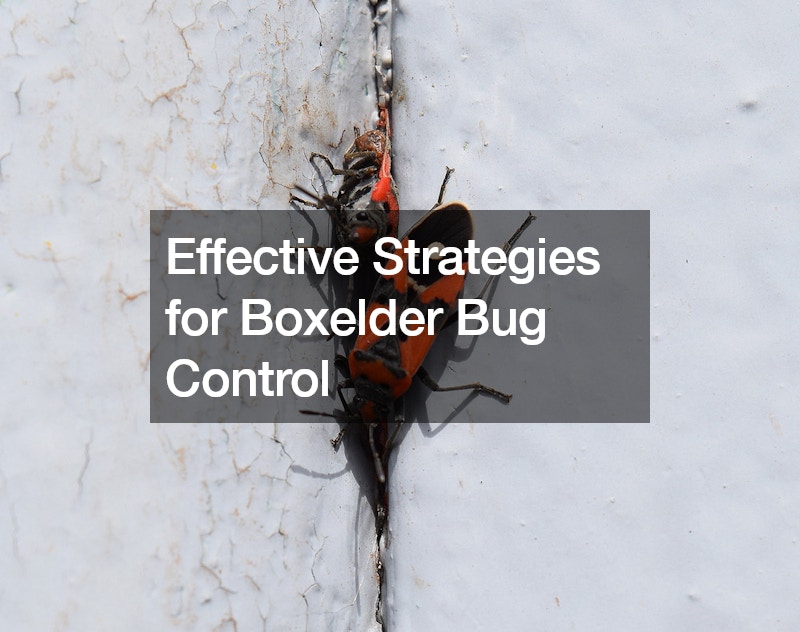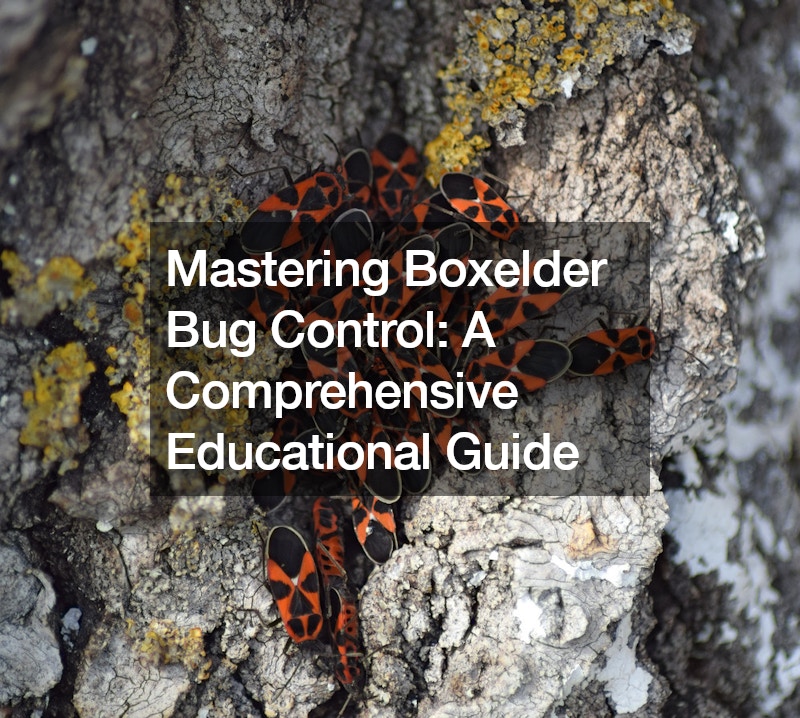
Boxelder bugs, those reddish-black insects with distinctive red markings, may not bite or transmit diseases, but their swarming behavior can be a real nuisance in homes and classrooms. This educational guide empowers you to understand the biology of boxelder bugs, identify effective control strategies, and implement preventative measures to keep your space free from these unwelcome guests. Boxelder bugs may seem like a minor nuisance, but their swarming behavior can disrupt daily activities in homes and classrooms. These reddish-black insects, with their distinctive red markings, don’t bite or transmit diseases, but their presence can be overwhelming, especially when they cluster around windows, doors, or light fixtures. This educational guide empowers you to take control of the situation.
By delving into the fascinating world of boxelder bug biology, you’ll gain the knowledge and practical strategies to implement effective control measures. Learn how to prevent infestations, identify safe and effective removal techniques, and create a more comfortable environment for yourself, your family, or your students. With the right approach, boxelder bug control can be a breeze, allowing you to reclaim your space and minimize unwanted insect guests.
1. Unveiling the Boxelder Bug: A Crash Course in Entomology
Species Spotlight: Boxelder bugs (Boisea trivittata) belong to the order Hemiptera, also known as true bugs. They are native to North America and commonly found in temperate climates. Life Cycle: Boxelder bugs complete a one-year life cycle. Eggs are laid in the fall on the bark of boxelder trees (their namesake) and other maples. Nymphs hatch in the spring, feeding on the sap of these trees before reaching adulthood in late summer. Adults then seek shelter in homes and buildings as the weather cools. Food Preferences: Boxelder bugs feed primarily on the sap of boxelder and maple trees, but they are not picky eaters. They can also feed on other trees and shrubs and may be attracted to ripening fruits and vegetables. 2. Boxelder Bug Behavior: Understanding Their Invasion Tactics
Seasonal Migrations: Boxelder bugs instinctively seek warm shelter for overwintering as temperatures drop in fall. This often leads them to invade homes and buildings, particularly areas exposed to sunlight. Aggregation: Boxelder bugs aggregate in large numbers, seeking warmth and safety. This clustering behavior can be quite alarming, especially when they congregate around windows and doors. Limited Flight: Boxelder bugs have wings but are not strong fliers. They typically enter structures through cracks, gaps, or open doors and windows. 3. The Science of Control: Effective Strategies for Eradication
Prevention is Key: Sealing cracks and gaps around windows, doors, and other potential entry points is the most effective way to prevent boxelder bug infestations. Weather stripping and door sweeps can be very helpful. Natural Deterrents: Caulk gaps around your home’s foundation to prevent entry. You can also try planting natural repellents like chrysanthemums or lavender around the perimeter of your property. Vacuuming: Simply vacuuming up boxelder bugs quickly and effectively removes them from your home or classroom. Immediately empty the vacuum cleaner bag outdoors to prevent it from escaping. Soapy Water Spray: A solution of mild dish soap mixed with water can effectively kill boxelder bugs when in contact. Spray them directly, ensuring they are thoroughly saturated. Insecticides: Insecticides containing pyrethroids or bifenthrin can be used as a last resort for severe infestations. Always follow the manufacturer’s instructions carefully and prioritize non-chemical methods whenever possible, especially in educational settings. 4. Boxelder Bug Biology in the Classroom: Engaging Activities and Experiments
Life Cycle Observation: Raise boxelder bugs (purchased from a science supply company) in a controlled environment to observe their life cycle firsthand. This is a fascinating way for students to learn about insect metamorphosis. Habitat Exploration: Take a field trip to observe boxelder bugs in their natural habitat (boxelder or maple trees) during the warmer months. Discuss their role in the ecosystem and the types of predators they may encounter. Building Bug Barriers: Challenge students to design and construct miniature barriers using common materials to prevent boxelder bugs from entering a model house. This activity encourages creativity and problem-solving skills. 5. Beyond the Classroom: Responsible Bug Control in Homes and Schools
Communication is Key: In a school setting, keep parents and staff informed about any boxelder bug infestations and the implemented control measures. Safety First: If using insecticides, prioritize the safety of children and pets. Ensure proper ventilation and follow all safety precautions listed on the product label. Long-Term Management: A combination of preventative measures and occasional control methods is most effective for long-term boxelder bug management. Regularly inspect your home or classroom for potential entry points and address them promptly. 6. Conclusion: Coexisting with Boxelder Bugs
By understanding the biology and behavior of boxelder bugs, you can implement safe and effective control strategies. Remember, prevention is the best medicine! Through education, responsible control methods, and a proactive approach, we can minimize boxelder bug intrusions and ensure a more comfortable environment for humans and these fascinating insects.
.

